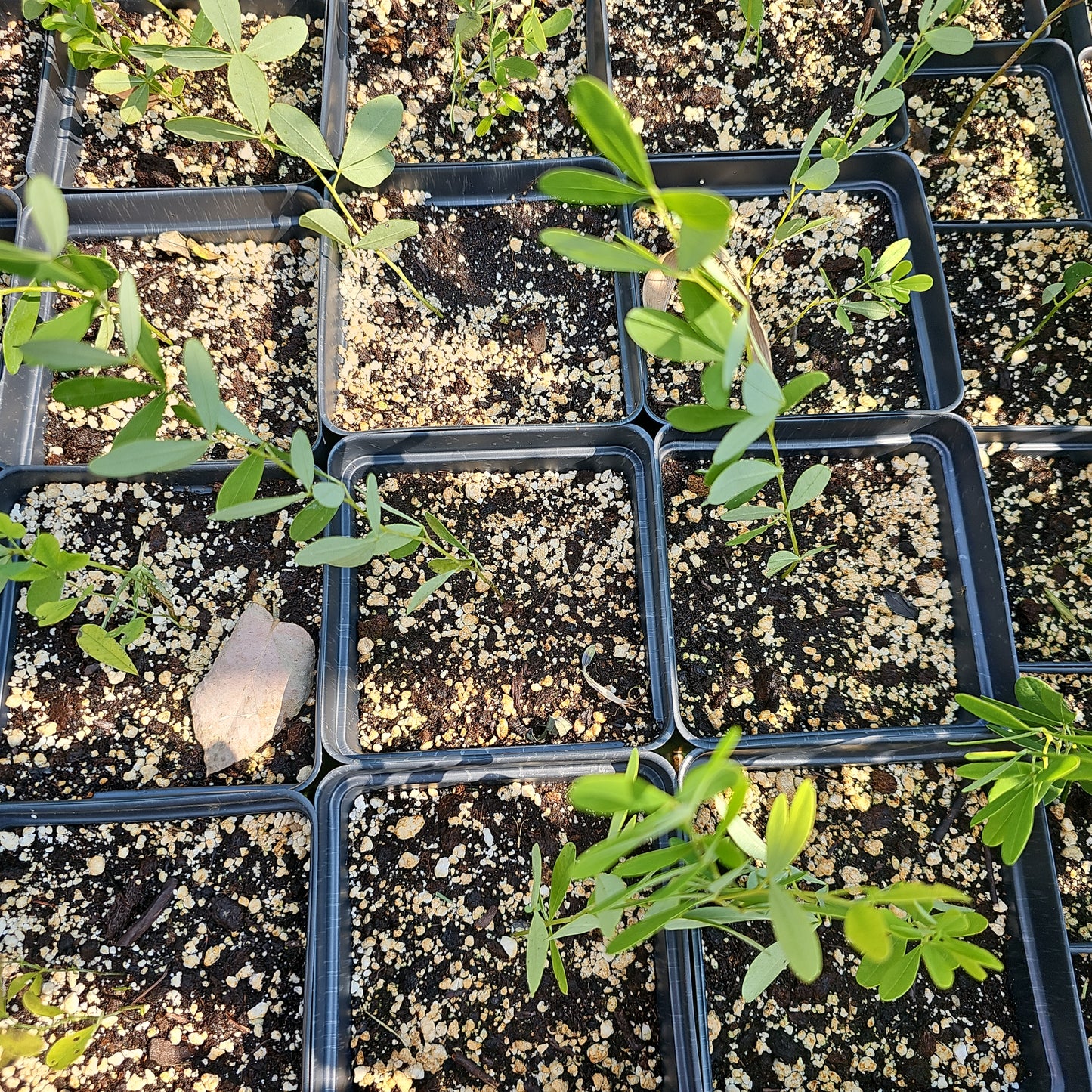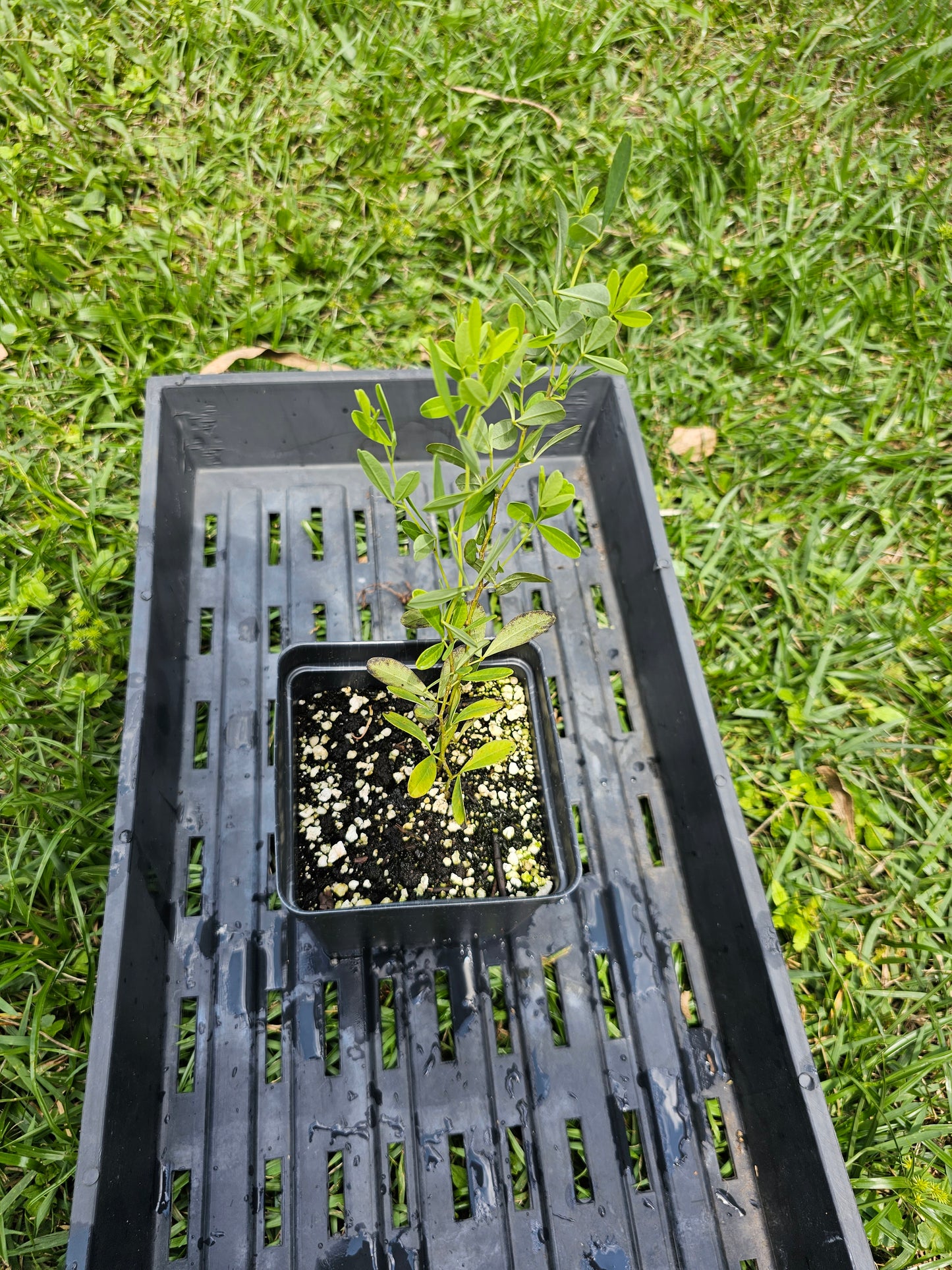Gnarly Nursery
Baptisia alba
Baptisia alba
Out of stock
Couldn't load pickup availability
Starting towake up.
White wild indigo is a long-lived perennial, herbaceous wildflower. Its showy white blooms are borne on erect, terminal racemes that extend a foot or more above the foliage and remain for several weeks. A single plant may produce several flower stalks. Leaves are compound, alternately arranged, and comprised of three bluish-green, elliptic to ovate leaflets. Young seed pods are green and turn greyish-black as they mature. They often appear inflated.
White wild indigo occurs naturally in pine flatwoods and along riverbanks and deciduous forest edges. It attracts many pollinators and is the larval host plant for the Wild indigo duskywing and Zarucco duskywing butterflies. The fruits are eaten by a variety of birds, and the foliage is browsed by rabbits and deer. (The plant’s large tuberous roots allow it to withstand browsing.)
Many species of Baptisia were historically used to produce a blue dye, hence the common name of the genus, indigo.
Family: Fabeaceae (Legume, bean or pea family)
Native range: Panhandle, north and central peninsula
To see where natural populations of White wild indigo have been vouchered, visit florida.plantatlas.usf.edu.
Hardiness: 8a-9b (5a-9b)
Soil: Moderately to very dry, acidic to neutral soils
Exposure: Full sun to partial shade
Growth habit: 2–3+’+ tall, often wider than tall
Propagation: Seed, early season cuttings
Garden tips: White wild indigo works well in a mixed wildflower planting, particularly in the background given its relative height. It dies back in winter, but returns in the spring. It does not tolerate root disturbance, so plant seed or seedling where the mature plant is intended to remain.
Pot Size: trade gallon
Share



